Register to unlock your exclusive B2B prices and start shopping. Sign up now!
Phoenix Contact E-mobility
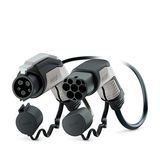
Order only
Phoenix Contact
EV-TAG3PK-1AC32A-4,0M6,0ESBK01 - AC charging cable
158,47 €
per pcs
EAN: 4055626230894
MPN: 1623909
Box: 1
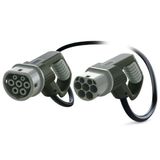
Order only
Phoenix Contact
EV-T2G3PC-3AC32A-6,0M6,0ESBK01 - AC charging cable
202,06 €
per pcs
EAN: 4055626343174
MPN: 1627645
Box: 1
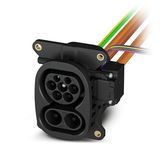
Order only
Phoenix Contact
CHARX T2HBI24-1AC32DC125-2,0M2 - Vehicle charging inlet
620,40 €
per pcs
EAN: 4063151282295
MPN: 1211201
Box: 1

Order only
Phoenix Contact
CHARX T2HBI12-DC200-2,0M2 - Vehicle charging inlet
604,44 €
per pcs
EAN: 4063151283858
MPN: 1211221
Box: 1
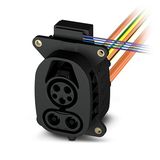
Order only
Phoenix Contact
CHARX T1HBI12-DC200-2,0M1 - Vehicle charging inlet
597,40 €
per pcs
EAN: 4063151284329
MPN: 1211595
Box: 1

Order only
Phoenix Contact
EV-T2M4CC-DC250A-6,5M70ESBK11 - DC charging cable
887,36 €
per pcs
EAN: 4063151303600
MPN: 1219176
Box: 1

Order only
Phoenix Contact
EV-CC-AC1-M3-CBC-RCM-ETH - AC charging controller
565,70 €
per pcs
EAN: 4055626503691
MPN: 1018701
Box: 1

Order only
Phoenix Contact
EV-T2G3PC-3AC20A-6,0M2,5ESBK01 - AC charging cable
155,01 €
per pcs
EAN: 4055626522395
MPN: 1027853
Box: 1
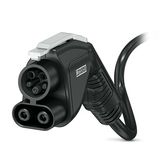
Order only
Phoenix Contact
EV-T1G2CC-DC80A-4,0M6ASBK11 - DC charging cable
279,60 €
per pcs
EAN: 4063151342524
MPN: 1236562
Box: 1

Order only
Phoenix Contact
CHARX T2HCI24-3AC32-2,0M2 - Vehicle charging inlet
268,57 €
per pcs
EAN: 4063151464004
MPN: 1271965
Box: 1

Order only
Phoenix Contact
EV-RCM-6DC-WAT-X10 - Differential current monitoring
64,01 €
per pcs
Subtotal: 640,10 €
MOQ: 10
EAN: 4063151560867
MPN: 1309695
Box: 1

Order only
Phoenix Contact
EV-RCM-6DC-WAT - Differential current monitoring
64,01 €
per pcs
EAN: 4063151560669
MPN: 1309697
Box: 1

Order only
Phoenix Contact
EV-T2M4CC-DC150A-3,0M35ESBK11 - DC charging cable
467,78 €
per pcs
EAN: 4063151168162
MPN: 1160486
Box: 1
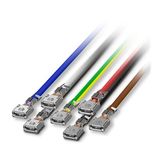
Order only
Phoenix Contact
EV-T2M3SOW-3AC20A-0,3M2,5E - Cable set for infrastructure charging socket
6,47 €
per pcs
EAN: 4063151176785
MPN: 1164355
Box: 1
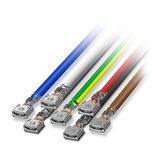
Order only
Phoenix Contact
EV-T2M3SOW-3AC32A-0,3M6,0E - Cable set for infrastructure charging socket
7,07 €
per pcs
EAN: 4063151177355
MPN: 1164362
Box: 1
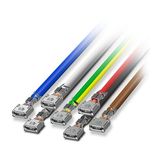
Order only
Phoenix Contact
EV-T2M3SOW-3AC32A-0,7M6,0E - Cable set for infrastructure charging socket
12,79 €
per pcs
EAN: 4063151176068
MPN: 1164365
Box: 1
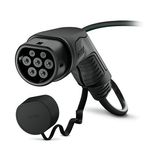
Order only
Phoenix Contact
EV-T2G3C-3AC32A-7,0M6,0ESBK11 - AC charging cable
189,47 €
per pcs
EAN: 4063151213398
MPN: 1179804
Box: 1
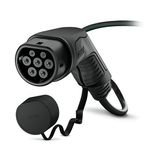
Order only
Phoenix Contact
EV-T2G3C-3AC20A-4,0M2,5ESBK11 - AC charging cable
99,56 €
per pcs
EAN: 4063151215200
MPN: 1179798
Box: 1

Order only
Phoenix Contact
EV-T2M4CC-DC150A-8,0M35ESBK11 - DC charging cable
647,00 €
per pcs
EAN: 4063151244262
MPN: 1192334
Box: 1
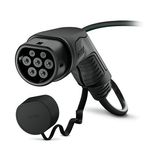
Order only
Phoenix Contact
EV-T2G3C-1AC20A-4,0M2,5ESBK11 - AC charging cable
72,40 €
per pcs
EAN: 4063151214296
MPN: 1180028
Box: 1
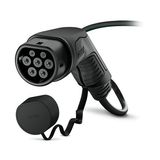
Order only
Phoenix Contact
EV-T2G3C-3AC32A-4,0M6,0ESBK11 - AC charging cable
147,19 €
per pcs
EAN: 4063151215057
MPN: 1179815
Box: 1
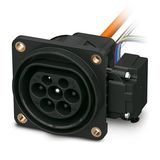
Order only
Phoenix Contact
CHARX T2HCI12-1AC32-2,0M2 - Vehicle charging inlet
194,28 €
per pcs
EAN: 4063151461294
MPN: 1271830
Box: 1
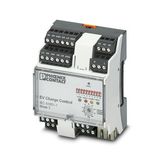
Order only
Phoenix Contact
EM-CP-PP-ETH - AC charging controller
305,69 €
per pcs
EAN: 4046356681032
MPN: 2902802
Box: 1

Order only
Phoenix Contact
EV-T2G3C-3AC32A-5,0M6,0ESBK11 - AC charging cable
143,56 €
per pcs
EAN: 4055626697185
MPN: 1056700
Box: 1
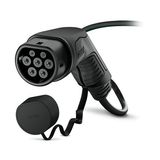
Order only
Phoenix Contact
EV-T2G3C-1AC20A-5,0M2,5ESBK11 - AC charging cable
76,47 €
per pcs
EAN: 4055626697468
MPN: 1056696
Box: 1

Order only
Phoenix Contact
EV-T1G2K-1AC32A-5,0M10ASBK11 - AC charging cable
188,45 €
per pcs
EAN: 4055626722658
MPN: 1064755
Box: 1

Order only
Phoenix Contact
EV-T2HPCC-DC500A-4,0M50ECBK11 - DC charging cable
2 424,14 €
per pcs
EAN: 4055626882925
MPN: 1087136
Box: 1
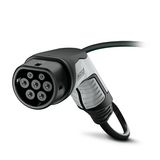
Order only
Phoenix Contact
EV-T2G3C-3AC20A-5,0M2,5ESBK01U - AC charging cable
101,35 €
per pcs
EAN: 4055626903057
MPN: 1091136
Box: 1
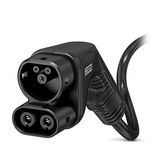
Order only
Phoenix Contact
EV-T2G4CC-DC80A-5,0M16ESBK11 - DC charging cable
259,84 €
per pcs
EAN: 4055626997476
MPN: 1106633
Box: 1
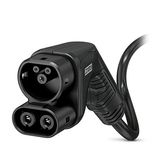
Order only
Phoenix Contact
EV-T2G4CC-DC40A-5,0M6,0ESBK11 - DC charging cable
191,46 €
per pcs
EAN: 4055626997186
MPN: 1106637
Box: 1

Order only
Phoenix Contact
EV-T2M4CC-DC80A-3,5M16ESBK11 - DC charging cable
358,42 €
per pcs
EAN: 4063151000271
MPN: 1106939
Box: 1

Order only
Phoenix Contact
EV-T2M4CC-DC80A-6,0M16ESBK11 - DC charging cable
412,48 €
per pcs
EAN: 4063151005115
MPN: 1106945
Box: 1
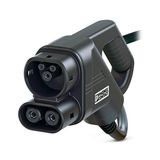
Order only
Phoenix Contact
EV-T2M4CC-DC80A-4,5M16ESBK11 - DC charging cable
379,62 €
per pcs
EAN: 4063151004972
MPN: 1106948
Box: 1
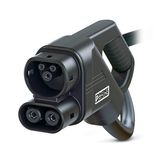
Order only
Phoenix Contact
EV-T2M4CC-DC200A-8,0M50ESBK11 - DC charging cable
795,54 €
per pcs
EAN: 4063151004668
MPN: 1106959
Box: 1

Order only
Phoenix Contact
EV-T2M4CC-DC80A-10M16ESBK11 - DC charging cable
568,53 €
per pcs
EAN: 4063151004422
MPN: 1106949
Box: 1

Order only
Phoenix Contact
EV-T2M4CC-DC200A-7,5M50ESBK11 - DC charging cable
767,84 €
per pcs
EAN: 4063151000547
MPN: 1106958
Box: 1
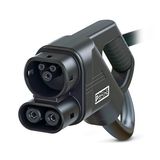
Order only
Phoenix Contact
EV-T2M4CC-DC200A-4,0M50ESBK11 - DC charging cable
519,37 €
per pcs
EAN: 4063151005368
MPN: 1107042
Box: 1
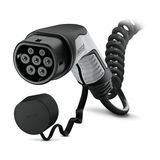
Order only
Phoenix Contact
EV-T2G3C-3AC32A-5,0M6,0EHBK01 - AC charging cable
233,03 €
per pcs
EAN: 4063151052553
MPN: 1126280
Box: 1
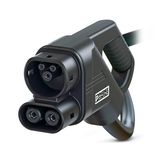
Order only
Phoenix Contact
EV-T2M4CC-DC250A-9,0M70ESBK11 - DC charging cable
1 072,22 €
per pcs
EAN: 4063151058760
MPN: 1130339
Box: 1
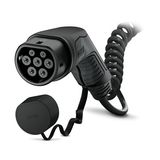
Order only
Phoenix Contact
EV-T2G3C-3AC20A-4,0M2,5EHBK11 - AC charging cable
131,19 €
per pcs
EAN: 4055626937908
MPN: 1097295
Box: 1

Order only
Phoenix Contact
EV-T2G3PC-1AC32A-5,0M6,0ESBK11 - AC charging cable
132,04 €
per pcs
EAN: 4055626938400
MPN: 1097306
Box: 1

Order only
Phoenix Contact
CHARX SEC-3100 - AC charging controller
559,63 €
per pcs
EAN: 4063151080181
MPN: 1139012
Box: 1

Order only
Phoenix Contact
CHARX SEC-3050 - AC charging controller
547,47 €
per pcs
EAN: 4063151082833
MPN: 1139018
Box: 1

Order only
Phoenix Contact
EV-CC-AC1-M3-RCM-ETH-3G-XP - AC charging controller
971,62 €
per pcs
EAN: 4063151087517
MPN: 1139452
Box: 1
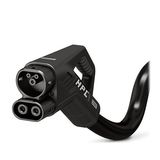
Order only
Phoenix Contact
EV-T2HPCC-DC500A-6,0M50ECBK11 - DC charging cable
2 750,18 €
per pcs
EAN: 4055626959726
MPN: 1101642
Box: 1

Order only
Phoenix Contact
EV-GBDC-PARK-R - Charging connector holder
23,78 €
per pcs
EAN: 4055626193861
MPN: 1623496
Box: 1
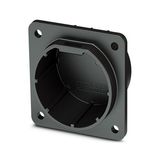
Order only
Phoenix Contact
EV-GBDC-PARK-SW - Charging connector holder
36,27 €
per pcs
EAN: 4055626193878
MPN: 1623497
Box: 1

Order only
Phoenix Contact
EV-T2G3PC-3AC20A-4,0M2,5ESBK01 - AC charging cable
143,97 €
per pcs
EAN: 4055626177892
MPN: 1623508
Box: 1
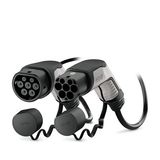
Order only
Phoenix Contact
EV-T2G3PC-1AC20A-4,0M2,5ESBK01 - AC charging cable
124,29 €
per pcs
EAN: 4055626177878
MPN: 1623506
Box: 1

Order only
Phoenix Contact
EV-T2G3PC-3AC32A-4,0M6,0ESBK01 - AC charging cable
159,71 €
per pcs
EAN: 4055626177908
MPN: 1623509
Box: 1
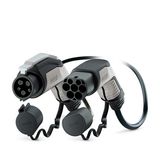
Order only
Phoenix Contact
EV-TAG3PK-1AC20A-4,0M2,5ESBK01 - AC charging cable
134,96 €
per pcs
EAN: 4055626230887
MPN: 1623908
Box: 1
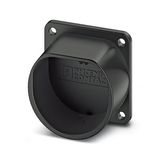
Order only
Phoenix Contact
EV-T2AC-PARK - Charging connector holder
16,21 €
per pcs
EAN: 4055626242828
MPN: 1624148
Box: 1
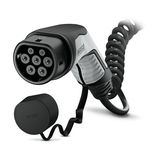
Order only
Phoenix Contact
EV-T2G3C-1AC32A-4,0M6,0EHBK01 - AC charging cable
159,48 €
per pcs
EAN: 4055626299426
MPN: 1627127
Box: 1
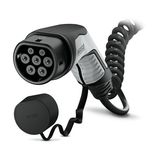
Order only
Phoenix Contact
EV-T2G3C-3AC20A-4,0M2,5EHBK01 - AC charging cable
147,23 €
per pcs
EAN: 4055626299433
MPN: 1627128
Box: 1
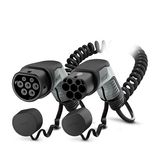
Order only
Phoenix Contact
EV-T2G3PC-1AC20A-4,0M2,5EHBK01 - AC charging cable
155,17 €
per pcs
EAN: 4055626299457
MPN: 1627131
Box: 1
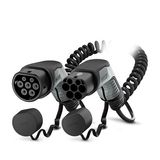
Order only
Phoenix Contact
EV-T2G3PC-3AC20A-4,0M2,5EHBK01 - AC charging cable
195,69 €
per pcs
EAN: 4055626299471
MPN: 1627135
Box: 1

Order only
Phoenix Contact
EV-T2G3PC-1AC32A-4,0M6,0EHBK01 - AC charging cable
177,75 €
per pcs
EAN: 4055626299464
MPN: 1627133
Box: 1

Order only
Phoenix Contact
EV-T1G3C-1AC32A-4,0M6,0ESBK01 - AC charging cable
115,69 €
per pcs
EAN: 4055626322254
MPN: 1627343
Box: 1
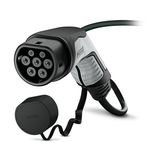
Order only
Phoenix Contact
EV-T2G3C-3AC20A-5,0M2,5ESBK01 - AC charging cable
94,31 €
per pcs
EAN: 4055626317021
MPN: 1627365
Box: 1

Order only
Phoenix Contact
EV-TAG3PK-1AC20A-7,0M2,5ESBK01 - AC charging cable
147,90 €
per pcs
EAN: 4055626340524
MPN: 1627591
Box: 1
You’re not just buying a cable set. You’re designing uptime. This guide distills what matters when specifying Phoenix Contact e-mobility hardware for depot, workplace, retail, and highway charging.
System View: From Grid to Vehicle
- AC layer (Mode 3): Wallboxes and posts for 3.7–22 kW with Type 2 interfaces. Use Phoenix Contact AC charging solutions where duty cycles are long and maintenance windows are short.
- DC layer (Mode 4): 30–400+ kW cabinets and dispensers. Phoenix Contact DC charging systems (CCS) enable short dwell times and controlled thermal loads.
- Controls & comms: Controllers, PLC add-ons, metering, and network modules that bind OCPP backends, load management, and payment.
- EV side: Inlets and Phoenix Contact electric vehicle connectors (AC Type 2, DC CCS2) with options for high cycle life and harsh environments.
Standards & Interoperability You Should Lock In
- Connectors: IEC 62196 (Type 2, Combo 2/CCS2).
- Charging control: IEC 61851-1 (AC), 61851-23/-24 (DC).
- Vehicle communication: DIN 70121 and ISO 15118 (incl. Plug & Charge readiness).
- Backend: OCPP 1.6J minimum; plan for 2.0.1 in new builds.
Hardware Building Blocks (Typical BoM Buckets)
- EVSE controllers & I/O: PWM/PLC control, contactor drive, insulation monitoring hooks, metering inputs.
- Power path: AC contactors, DC contactors, relays, shunts/CTs, solid overcurrent protection.
- Connector sets:
- AC: Type 2 sockets, shutters, latch/lock kits, leads.
- DC: CCS2 vehicle cable/plug sets, straight/angled heads, optional liquid-cooling for >300 A.
- Cables & harnessing: UV/oil-resistant sheaths, low smoke, bend-radius compliant for dispensers and cable management booms.
- Edge comms: Ethernet, cellular gateways, RFID/reader modules, MID-grade metering.
- Accessories: Seals, caps, holsters, strain-relief, service kits.
This is where Phoenix Contact EV infrastructure components stand out: consistent pin plating, temperature sensing in DC pins, robust strain-relief, and serviceable wear parts.
AC vs DC: Practical Selection
- Workplace/fleet base load: AC, 11–22 kW. Low CapEx, distributed across stalls.
- Public fast turn: DC, 100–300 kW single or split cabinets. Cable cooling if >500 A peak.
- Mixed sites: AC for dwellers, a DC lane for turnaround vehicles. Shared transformer and dynamic load management.
Thermal & Mechanical Notes That Save Opex
- Connector temperature probes: Protects DC pins at high current; derate gracefully instead of tripping.
- Cable mass & ergonomics: For DC, specify assist systems (retractors/booms) to cut plug drops and strain.
- Ingress & UV: Outdoor posts and dispensers should meet the IP/UV baseline for coastal/industrial air.
- Cycle life: Size spare connector sets according to expected plug-ins/day × warranty horizon.
Communications and Payments
- OCPP profiles: Smart charging, reservations, firmware OTA.
- IS 15118 / Plug & Charge: Budget for certificate management from day one, even if you enable later.
- Load management: Per-feeder balancing; coordinate with building EMS and tariff windows.
Procurement Checklist (Bulk/Frame Orders)
- Confirm connector family (Type 2, CCS2) and exact current class.
- Specify cable length, handle angle, and cooling option for DC.
- Lock controller firmware branch and OCPP version.
- Reserve service kits: seals, latch sets, holsters, strain-relief boots.
- Align metering class (MID) and calibration paperwork for audits.
- Define logistics: phased deliveries for site waves, DOA swap terms, and RMA path.
Typical Use-Case Presets
- Retail car park (dwell 1–3 h): 8–20 × AC 11–22 kW posts (Type 2), OCPP 1.6J, RFID + QR pay.
- Fleet depot (night dwell): AC rows + a pair of 150–200 kW DC for daytime peaks; connector holsters and rugged cable management
- Highway node: 300–400 kW DC cabinets, CCS2 liquid-cooled sets, redundant comms, hot-swap connectors.
Why Choose Bank of Lamps (Distributor)
- Engineering-led selection: We size Phoenix Contact charging technology to grid limits, cable runs, and duty cycles—before you commit to civil works.
- Predictable EU logistics: Single-warehouse flow with staged shipment plans for multi-site rollouts.
- B2B terms: Volume pricing, connector service kits on the same PO, advance spares to cap downtime.
- Documentation: Complete conformity packs and commissioning notes aligned to your OCPP backend and metering rules.
- Continuity: Replacement electric vehicle connectors and cable sets matched to your installed base for rapid field swaps.